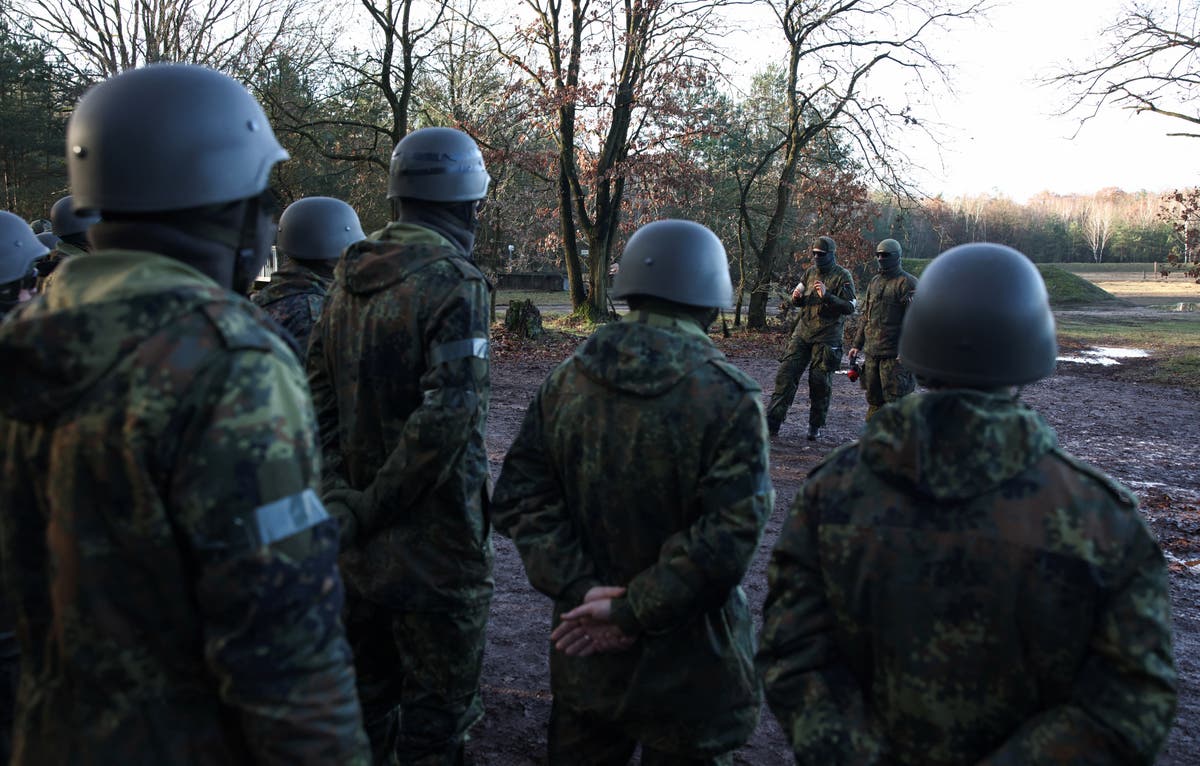
Ukrainian generals are looking to mobilize up to half a million new soldiers to repel Putin’s invading army, Ukrainian President Volodymyr Zelensky said.
Zelensky said he had not yet made a final decision on the army’s request because it was a matter of “fairness and money” as well as Ukraine’s defense capability.
This comes amid fears that Russia may crush Kiev’s army with its huge population and resources, at a time when Western military aid to Ukraine faces a dead end from the United States and the European Union.
Follow live updates about the war in Ukraine
“I said I would need more arguments to support this move,” the president said. “Because first and foremost, it’s a people issue, and secondly, it’s a fairness issue, it’s a defense capability issue, and it’s a financial issue.”
But how many troops does Ukraine have and how do they compare to the US and British armies?
Volodymyr Zelensky said he had not yet decided on the proposal because it was a matter of “justice.”
(AP)
Ukraine
Recent figures indicate that the Ukrainian army numbers about 500,000 soldiers, including 200,000 active military personnel.
If these numbers are accurate, the Ukrainian army’s proposal would bring the total number of soldiers to nearly one million.
Under Ukrainian law, only men between the ages of 27 and 60 can be mobilized on the front lines, although younger men can volunteer to fight. As of January 2022, the male population in Ukraine is 19 million.
Men between the ages of 18 and 20 may not be sent to the battlefield. Most of the Ukrainian soldiers on the front are believed to be volunteers, many of whom have been fighting since the Russian invasion began in February 2022.
Estimates of the number of Ukrainian men killed in the conflict ranged between 30,000 and 70,000. In November, a Ukrainian civilian group estimated the death toll at 30,000.
But American military sources indicated that the number is closer to 70,000. Kiev considers its losses a state secret, and officials say that revealing this figure could harm its war effort.
Ukrainian soldiers walk toward their base in Donetsk, Ukraine, earlier this year. The Ukrainian army is seeking to mobilize an additional 500,000 soldiers
(AFP via Getty Images)
Russia
The number of military personnel serving in the Russian army is approximately four times that of the Ukrainian army (about 1,330,900 men and 250,000 reservists). As of 2021, the male population in Russia is approximately 66 million.
In July, the Russian parliament raised the maximum conscription age for men from 27 to 30, increasing the number of young men subject to one year of compulsory military service starting January 1, 2024.
This means that men will be required to perform a year’s military service, or equivalent training during higher education, between the ages of 18 and 30, instead of 18 and 27.
The law also prevents men from evading the draft by prohibiting them from leaving Russia from the day they are summoned to the conscription office.
Russian President Vladimir Putin sits with Defense Minister Sergei Shoigu. Russia raised the maximum age for conscription from 27 to 30 years
(Sputnik)
we
The United States Army has about 1,832,000 military personnel, according to recent figures. As of 2022, the male population of the United States was 165 million.
As many as 1,390,000 of these forces are said to be active personnel and 442,000 are reservists. Conscription does not exist in the United States at this point.
But all men between the ages of 18 and 25 must register with Selective Service, a government agency that maintains a registry of U.S. citizens potentially subject to conscription. This allows the US Congress to identify and call upon all men of fighting age in the event of a major conflict.
The United States introduced conscription six times: in the American Revolutionary War, American Civil War, World War I, World War II, the Korean War, and the Vietnam War.
The total number of military personnel in the US Army is 1,832,000
(AFP via Getty Images)
Britain
The total number of military personnel in the British Army is about 231 thousand soldiers. As many as 194,000 of them are active and 37,000 are reservists. As of 2021, there were 29 million men living in the UK.
Compulsory conscription has only taken place twice in the United Kingdom. It was introduced during World War I and World War II, lasting for four and 21 years respectively.

“Travel specialist. Typical social media scholar. Friend of animals everywhere. Freelance zombie ninja. Twitter buff.”






More Stories
Taiwan is preparing to face strong Typhoon Kung-ri
Israel orders residents of Baalbek, eastern Lebanon, to evacuate
Zelensky: North Korean forces are pushing the war with Russia “beyond the borders”